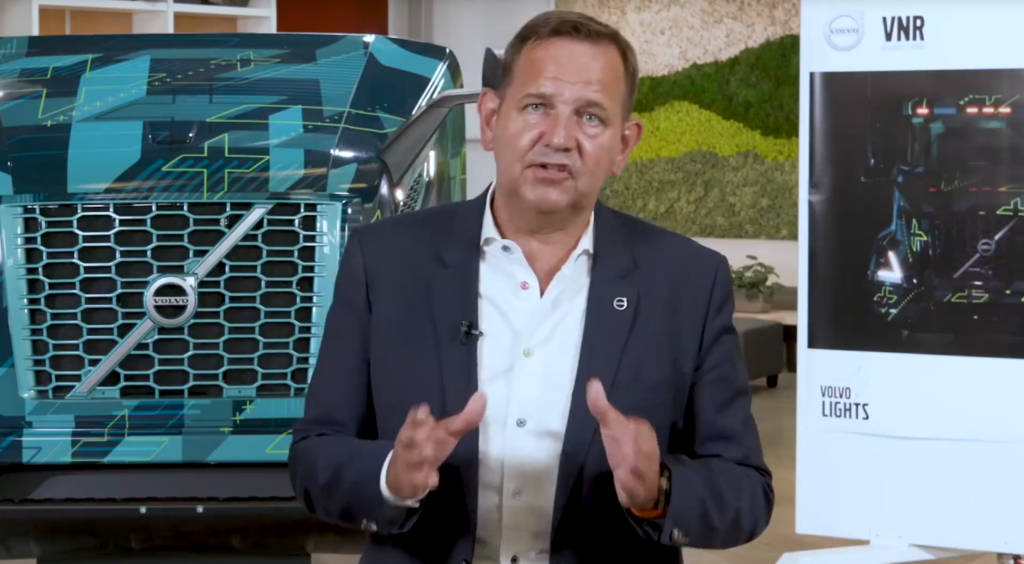Covid-19 can’t derail shift to electrification
LONG BEACH, Calif. – When economies around the world ground to a sudden halt due to the global Covid-19 pandemic, transport-related emissions also largely vanished.
Suddenly, distant mountain ranges came into view, NASA video from space was clearer and cities like New Delhi were under uncharacteristically blue skies. That could be a permanent benefit of adopting zero-emissions transportation technologies, Ryan Laskey, senior vice-president, Dana’s Commercial Vehicle Group, pointed out during ACT Virtual, this year’s digital version of ACT Expo.
“Look at the air quality and the difference you had during the quarantine period,” he said. “There are not a lot of times in history you’re able to stop transportation like we did.”
In some places, particulate emissions were down 60% during the quarantine period.
Judy Mitchell, governing board, South Coast Air Quality Management District, agreed the crisis temporarily cleared the air. But while passenger traffic disappeared, truck and container traffic only decreased about 20%, she noted.
“Heavy-duty diesel trucks continued to bring NOx emissions and smog to our regions,” she said. “What we need now, more than ever, are cleaner zero and near-zero emissions trucks and equipment.”

The good news is, those trucks are coming, and the Covid-19 pandemic has done little to slow their advance. Peter Voorhoeve, president, Volvo Trucks North America, gave an update on the Volvo LIGHTS (Low Impact Green Heavy Transport Solution), which is putting electric VNR regional haul tractors into service in California.
“We have gained experience to help guide fleets as they embark down this unpaved path towards electrification,” Voorhoeve said of the initiative. He emphasized the need to work collaboratively – there are 14 partners involved in Volvo LIGHTS. “Partnership is the new leadership.”
Developing the required charging infrastructure is the “most pressing need and the biggest obstacle” at the moment, Voorhoeve added.
Suppliers driving the shift to battery electric transportation have had to become creative in how they achieved this during the pandemic. Laskey spoke of Dana engineers designing wiring harnesses on the kitchen table and having design meetings using cellphone cameras.
But, he added, “We have not backed off at all in any of our sustainable mobility investments.”

The same can be said of Daimler Trucks North America (DTNA), according to Kary Schaefer, general manager of marketing and strategy. It has continued deploying electric trucks as part of its Innovation Fleet. That fleet recently surpassed 300,000 miles in real-world applications despite Covid-19 interruptions.
“We have kept dealers and customers running to support drivers, who were essential to delivering freight at that time,” said Schaefer. “We managed to get through the past few months with a minimal impact to program schedules.”
JB Hunt is one of the latest fleets to take delivery of a Class 8 electric truck – an eCascadia that will make its first deliveries this week. Craig Harper, chief operations officer with the company, said it learned some painful lessons when deploying natural gas vehicles about the importance of having an entire fueling ecosystem set up before the trucks are put on the road.
“When we kicked off (with natural gas) we heard of all these stations that were available, then we found out many were built for cars. Many were slow-fill, so it took too long to fuel our equipment. We learned from that – we have to have better infrastructure set up,” Harper said.
“You can’t bring a truck to market without that ecosystem wrapped around it.”
Kary Schaefer, DTNA
DTNA’s Schaefer agreed, and admitted truck makers have a role to play.
“You can’t bring a truck to market without that ecosystem wrapped around it,” she said, noting the OEM has to proactively work with utilities, government, and industry to ensure adequate fueling infrastructure is developed. “OEMs cannot be a bystander in this process.”
When adopting new technologies, Harper said JB Hunt leans heavily on its OEM partners to understand the implications. But as diesel has become more efficient, the performance bar new technologies must surpass is continuously raised.
“There’s a high bar for alternative vehicles to get over right now, with the improvements OEMs have made in mpg, and also cleaner-burning technology,” he said. This is especially true as diesel prices fall, he added.
He emphasized the need for government incentives so that battery-electric trucks can get into the field and prove their worth.
“Right now, when you get a quote on an electric vehicle, we’re talking numbers that are three to four times the price of diesel (trucks),” he said. “We can’t make that work. Part of being sustainable is having a sustainable piece of equipment to operate, but it’s also staying in business.”
Laskey said progress is being made in both battery and fuel cell technologies.
“We’ve got a way to go. We have to get that total cost of ownership at least at parity (with diesel),” he said.
“I think economic sustainability and environmental sustainability really need to go hand in hand,” added Schaefer. “Incentives are critical to reach scale.”
Have your say
This is a moderated forum. Comments will no longer be published unless they are accompanied by a first and last name and a verifiable email address. (Today's Trucking will not publish or share the email address.) Profane language and content deemed to be libelous, racist, or threatening in nature will not be published under any circumstances.